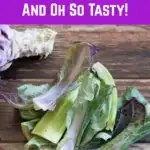
I’ll bet every time you cook a head of cauliflower you’re throwing away one of the tastiest parts. I know I was, that is until I learned about a super delicious ‘extra’ on every head of cauliflower.
You can do so much with those cream-colored florets – steam them, roast them, mash them, rice them, even make them into a pizza crust. And cauliflower is a favorite vegetable among the low-carb crowd because it makes a good stand-in for white potatoes.
It’s easy to see that cauliflower is a pretty great vegetable.
But did you know you can also eat the leaves that grow around the head of the cauliflower?
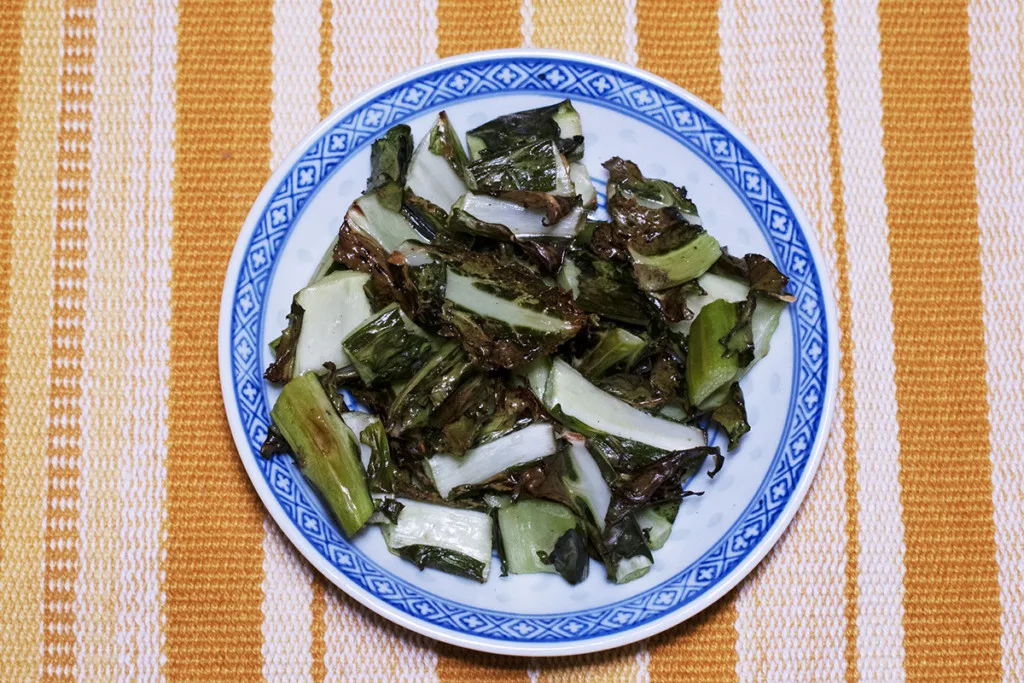
I know, right? I was surprised too. Who knew that the protective outer leaves were just as tasty as the head of cauliflower?
And now, after having tasted cauliflower leaves, I’m a little bummed knowing how many of them I’ve pitched over the years.
In this recipe, we’re going to roast them because magical things happen when you roast veggies.
The natural sugars in vegetables begin to caramelize when they’re roasted, making them a bit sweeter. And that’s exactly what makes roasted cauliflower leaves shine.
The leafy parts get crispy and crunchy like a chip, while the fleshier stem of the leaf turns tender and buttery. And we’ll be using a classic cauliflower flavor combo – garlic and parmesan.
Roasted cauliflower leaves make a wonderful side dish, especially if you’re looking for something a little different. They make for a pretty great healthy snack too – a little bit sweet, a little bit salty.
This dish is quick and easy to prepare, and yet the finished product looks pretty fancy.
If you aren’t growing cauliflower in your garden, ask around at the local farmer’s market. You can usually find someone willing to save cauliflower leaves for you. And if you buy a head of cauliflower at the store, it will usually have a few leaves too.
Give these a try; I think you’re going to love them.
What you’ll need:
- A colander
- A sheet pan
- Parchment paper
- A sharp knife
- A lidded bowl or plastic zipper baggie
Ingredients:
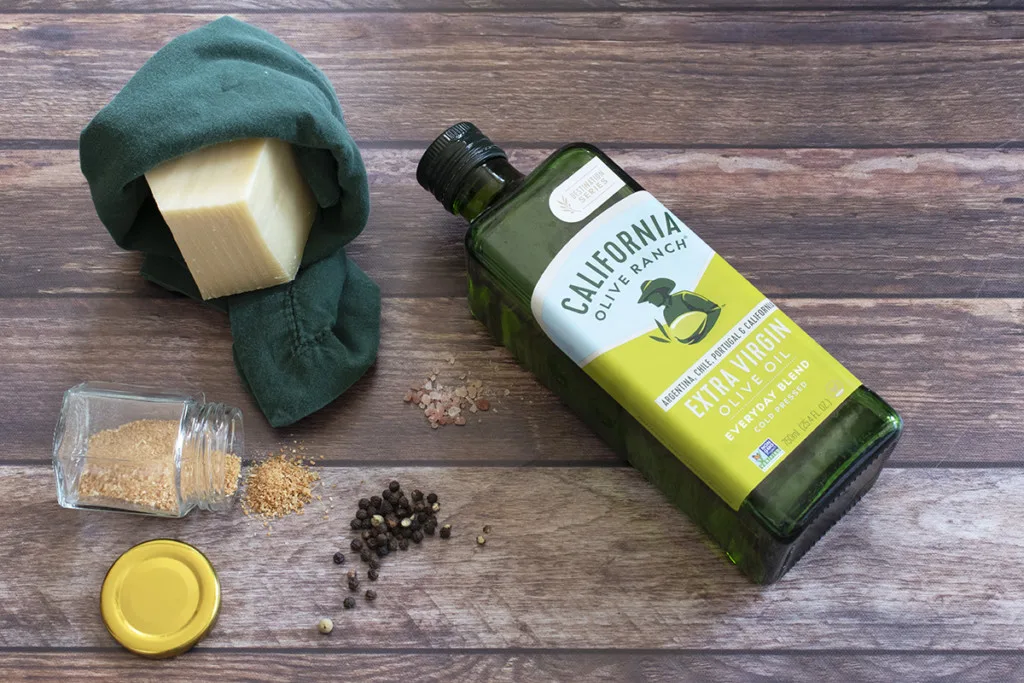
- Head of cauliflower with leaves still intact or saved cauliflower leaves
- 2 tablespoons of olive oil, melted butter works well too
- ½ teaspoon of garlic powder
- ¼ cup of freshly grated parmesan
- Salt and pepper to taste
Let’s get cooking!
- Preheat your oven to 400 degrees and line a sheet pan with parchment paper. Set aside.
- Carefully twist off or cut the leaves away from the cauliflower as close to the stalk as possible. (Save the stalk to eat with the rest of the cauliflower.) Rinse the leaves thoroughly in a colander. You may need to give the ends closest to the stem a good scrubbing if they’re gritty.
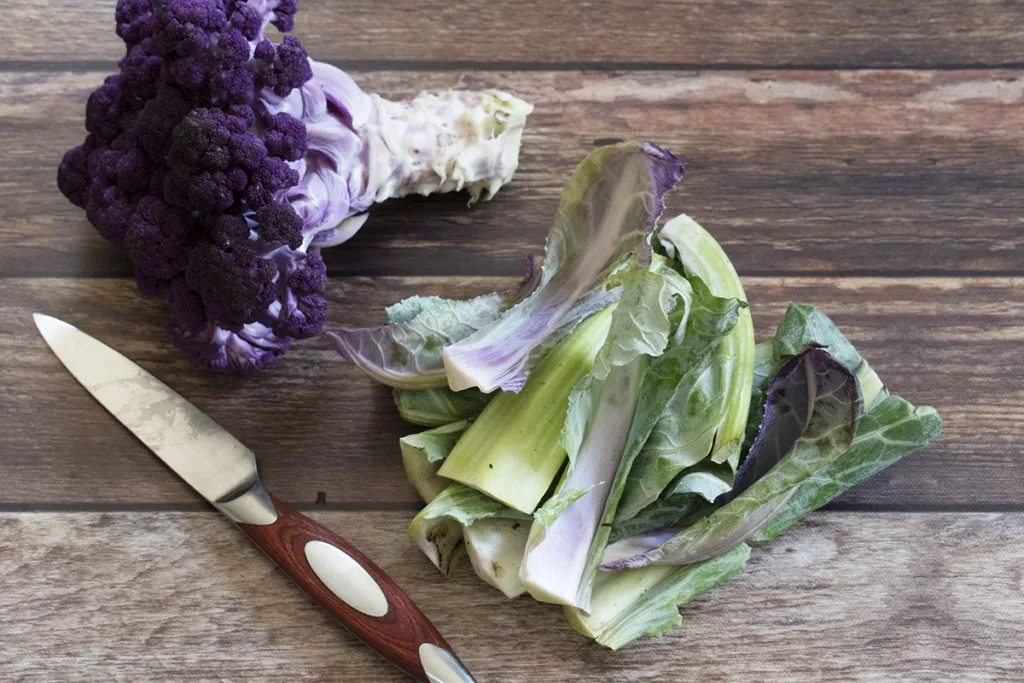
- Gently pat the leaves dry with a kitchen towel. When you’re roasting vegetables, it’s important to make sure you get them as dry as possible, so you aren’t steaming them.
- You can either roast the leaves whole as they are or chop them into bite-sized pieces. If you choose whole leaves, you may wish to cut thicker ones in half from top to bottom, so they cook evenly.
- In a lidded bowl or a plastic zipper-baggie, combine the cauliflower leaves with two tablespoons of olive oil, the garlic powder, and salt and pepper. Toss them well to coat. (Learn how easy it is to make homemade garlic powder here!)
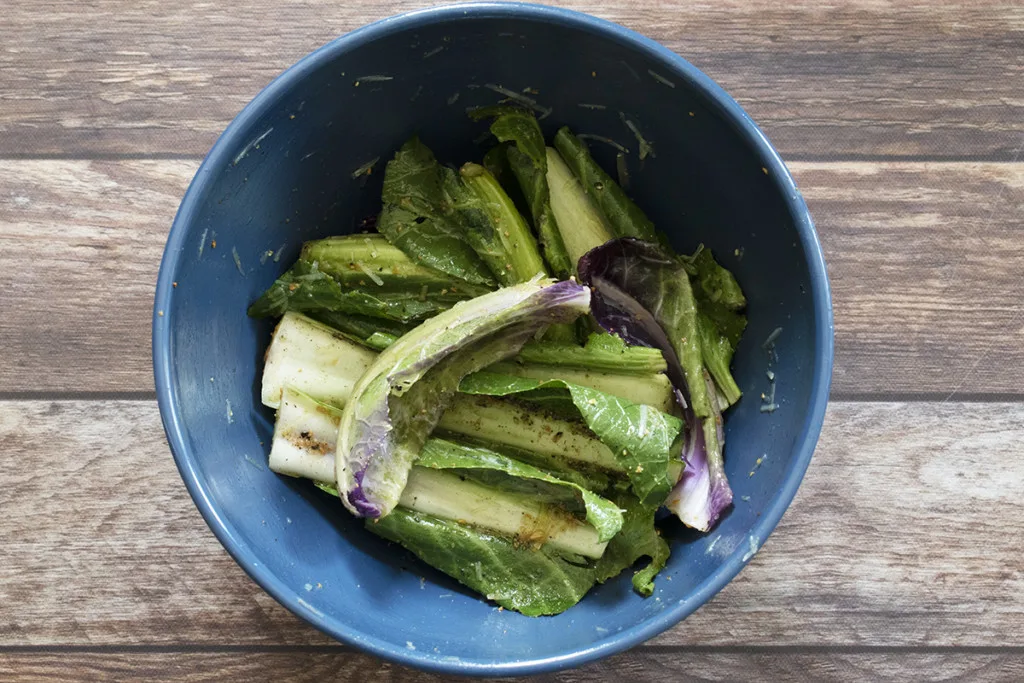
- Spread the cauliflower leaves onto the prepared sheet pan, making sure they don’t touch.
- Sprinkle the parmesan over the leaves, and then pop them into the oven on the topmost rack.
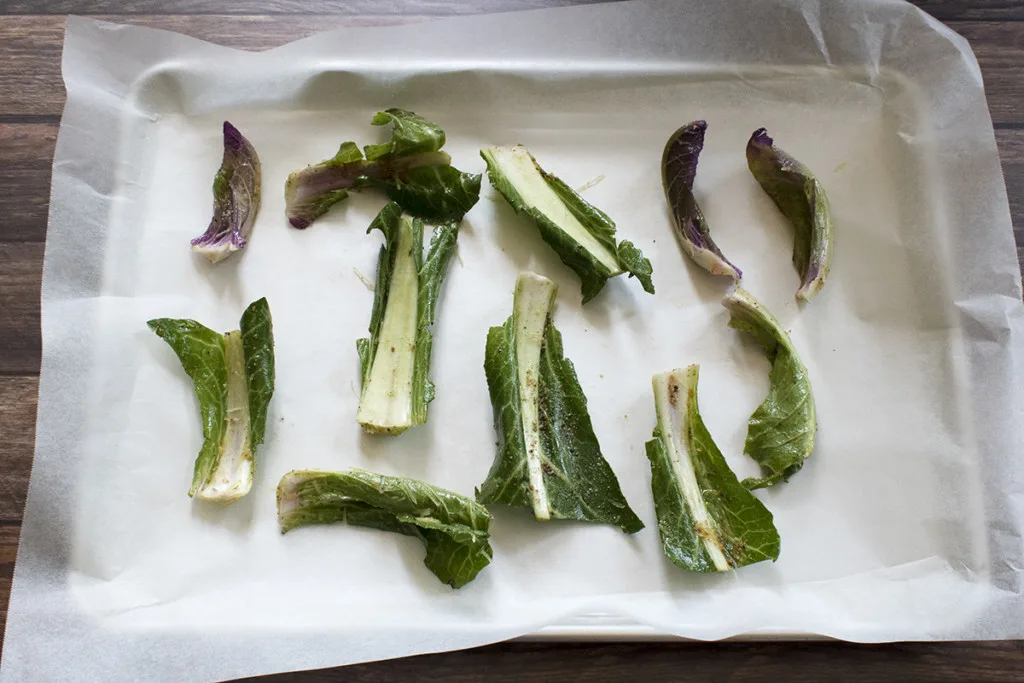
- For whole leaves, you’ll want to roast them for about fifteen minutes. If you’ve sliced them into bite-size pieces, roast them for around ten minutes.
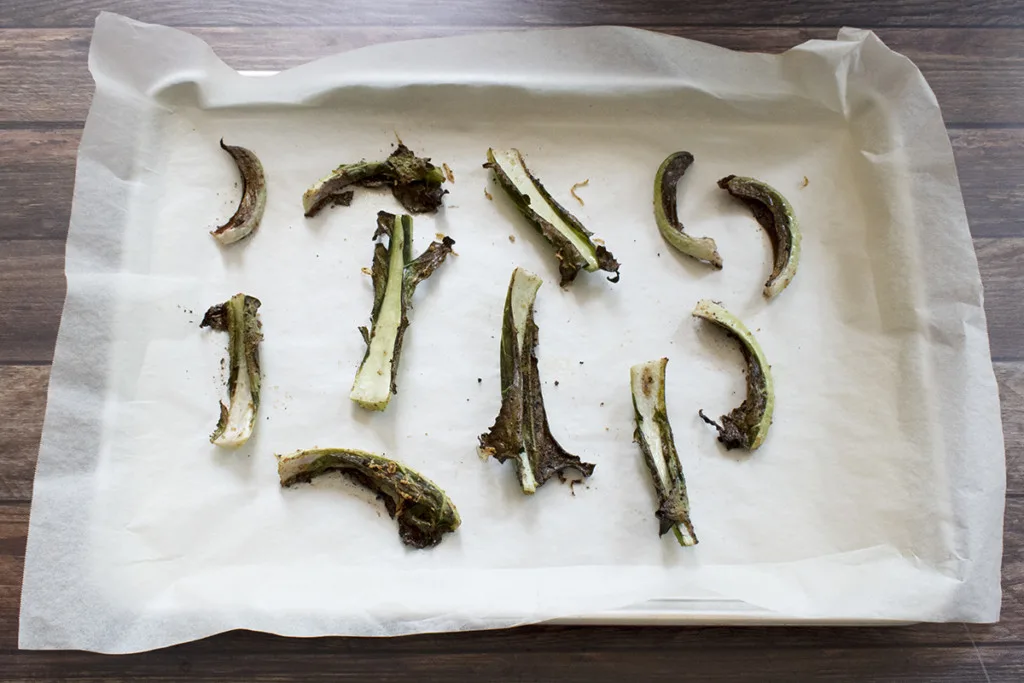
The roasted cauliflower leaves are wonderful, as is. But if you want to get really fancy, drizzle them with a little balsamic vinegar. Or squeeze a lemon over them.
Between the crispy outer leaves and the tender inner stalk, this tasty dish won’t last long.
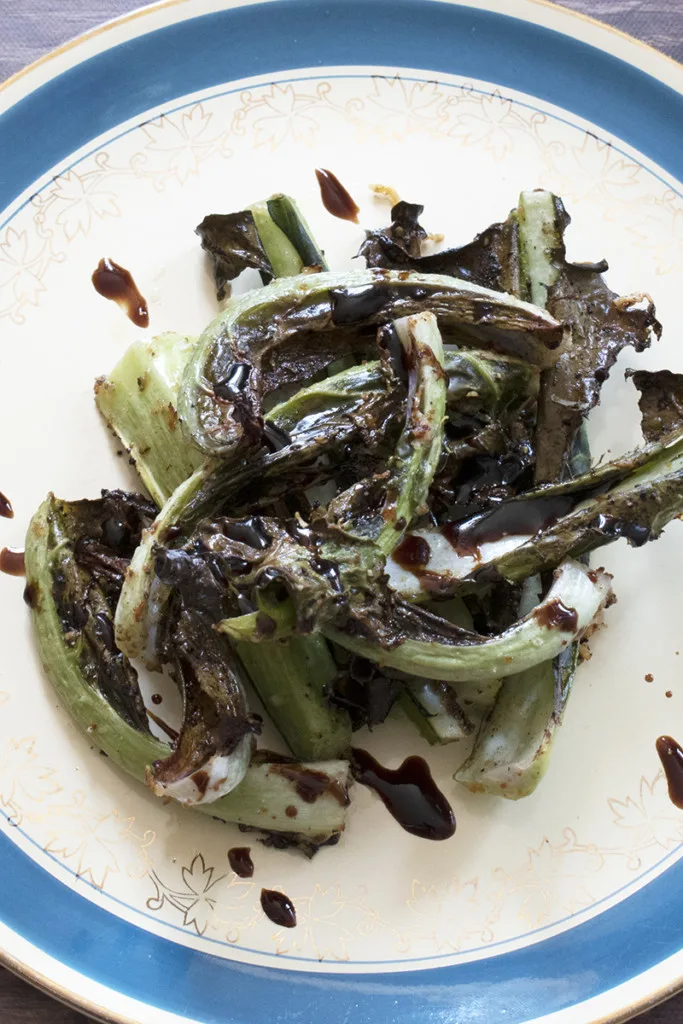
The more I make this, the more I’m wondering what else I could do with cauliflower leaves?
I think that chopped they would be a great addition to soups. The firmness of the leaf stem makes me think they’d be a great vegetable to try pickling. What I do know is I won’t be throwing them out anymore.
You wouldn’t believe all of the different parts of vegetables that we throw away that are edible.
For more tasty secondary vegetable ideas, check out our article – Yes, You CAN Eat That! 15 Food Scraps You Didn’t Know Were Edible (& Delicious!)

Get the famous Rural Sprout newsletter delivered to your inbox.
Including Sunday musings from our editor, Tracey, as well as “What’s Up Wednesday” our roundup of what’s in season and new article updates and alerts.


